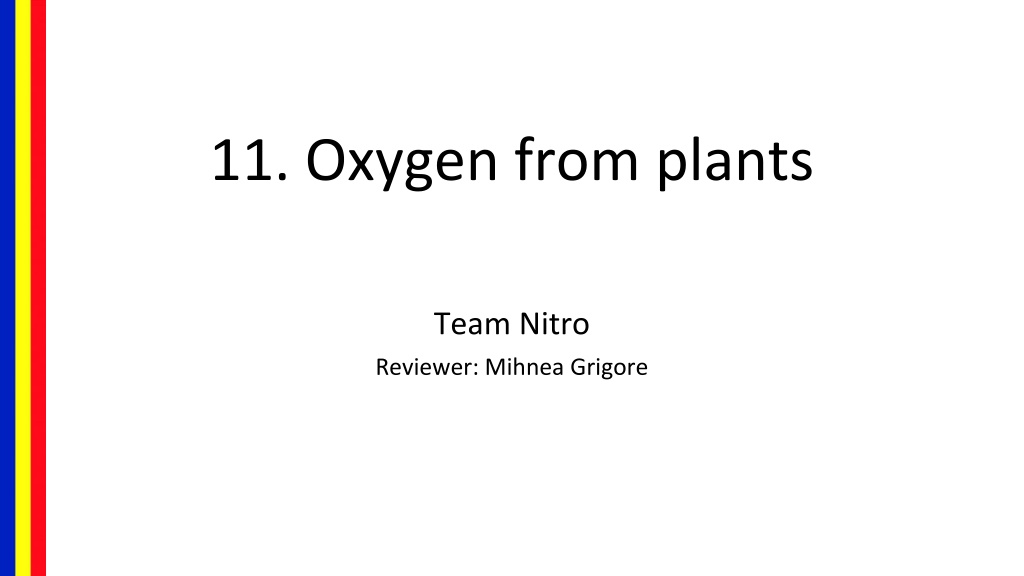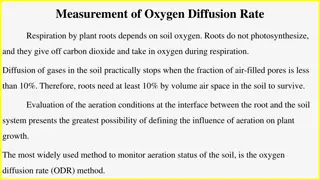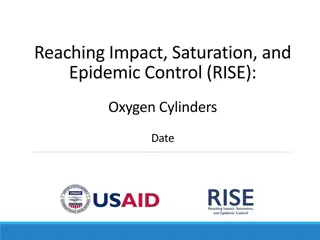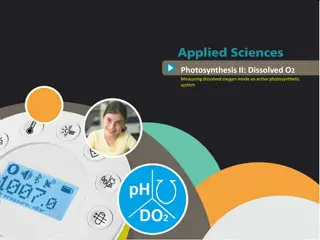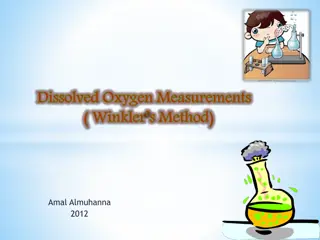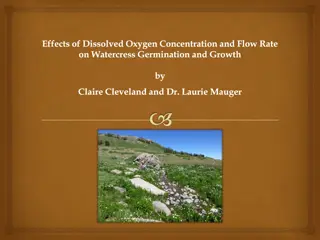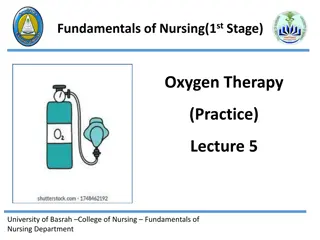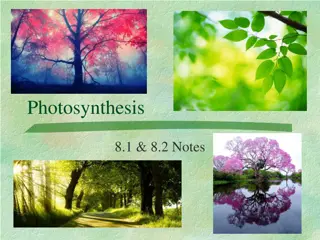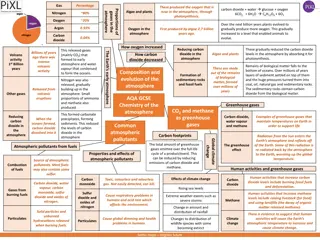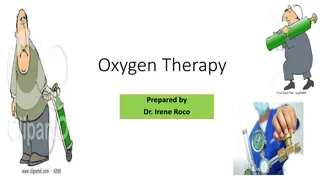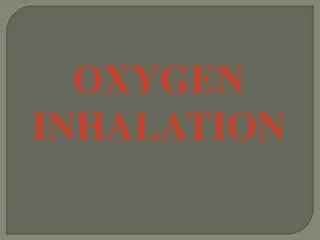Experimental Method for Measuring Oxygen Production in Green Plants
The reporter proposed an experimental method to measure oxygen production by an aquatic plant, highlighting the process and outcomes. While there were detailed explanations on photosynthesis, the report lacked essential elements such as explaining the choice of plant and the source of carbon dioxide, as well as not considering different light wavelengths' effects. The opposition noted inconsistencies in the experiment's proof, lacking environmental parameters, and highlighted unexplored parameters. Despite varied distances from the light source and data presentation in graphs, some fundamental aspects were overlooked, like quantifying oxygen in mass or moles.
Download Presentation

Please find below an Image/Link to download the presentation.
The content on the website is provided AS IS for your information and personal use only. It may not be sold, licensed, or shared on other websites without obtaining consent from the author. Download presentation by click this link. If you encounter any issues during the download, it is possible that the publisher has removed the file from their server.
E N D
Presentation Transcript
11. Oxygen from plants Team Nitro Reviewer: Mihnea Grigore
Summary Problem statement: Suggest an experimental method to measure how much oxygen is produced by a green plant. Summary: The reporter has proposed an experimental method to measure the quantity of oxygen produced by a selected aquatic plant and actually record it.
The Report Cons -did not explain why she chose Ambulia -did not say from where the carbon dioxide was taken (example: did not say if she used a carbon dioxide fertilizer) for the photosynthesis to happen -Only used a white light bulb, did not explain the influence of different wavelengths on the production of oxygen (ex: UV light) -Did not explain why the oxygen generation tops out at a certain point -Did not talk about the composition of the water (minerals and CO2 concentration) -Did not have hypotheses -did not measure the oxygen quantity in grams or number of moles; -used volume as unit of measure, which depends on the pressure and temperature of the environment; -did not take the oxygen bubbles on the beaker walls into consideration; Pros + explained profoundly the photosynthesis equation + talked about both photosynthesis and respiration +varied the distance from the light source +data presented in graphs +explained why she chose her method and the lacks of the other methods
The Opposition Pros + highlighted that the colour of the light (different wavelengths) were t tested +observed that the theory was consistent +highlighted the lack of proof of the experiment (the sensors used) and the lack of environmental parameters +brought into the discussion several parameters that were not studied in the reporter paper Cons -did not ask from where the carbon dioxide was taken and if the reporter used any fertilizer -did not ask/take into consideration that some bubbles of oxygen stuck to the beaker s sides -time management was poor -did not observe that the quantity of oxygen was not exprimated in mass or number of moles;
The discussed topics Reporter answer 1)Yes. 2)In her apartment. 3)yes (we agree with the reporter, although the reporter did not study this aspect in the paper) 4)23 degrees Celsius 5)No because the bulb was LED 6) It was easier to perform the experiment using an aquatic plant 7)Because it would give more consistent results. 8)White lights contains the whole spectrum of colors (it is a correct statement, but it does not answer the question) Opponent question 1)Did you take the environmental parameters into consideration? 2)Where did you conduct the experiments? 3)Do you think the color of the light matters? 4)What was the temperature of the room? 5) Did the light bulb heat up ? (the question of the opponent is a little irrelevant, since the bulb is placed away from the beaker and it does not influence thermally) 6) Why did you use an aquatic plant? 7) Why did you use the same plant for all the experiments 8) What do you think would've happened if you used green light?
